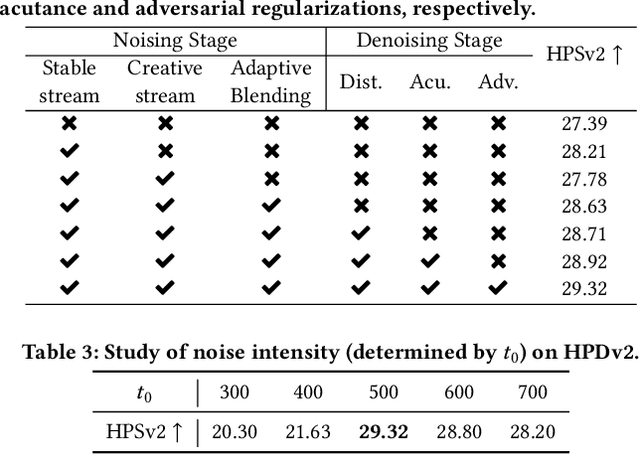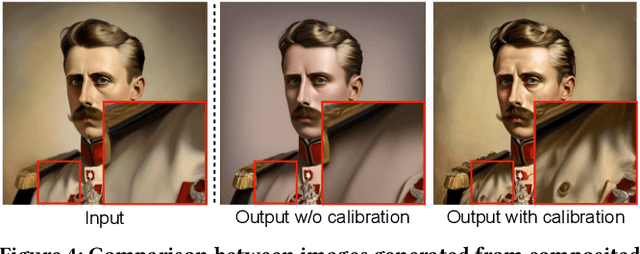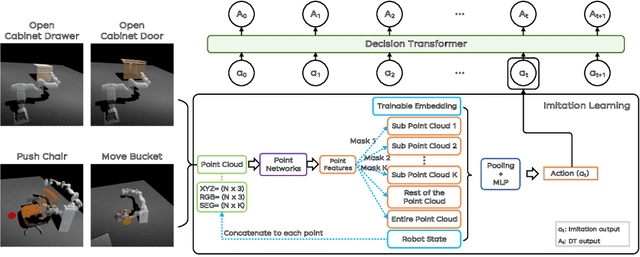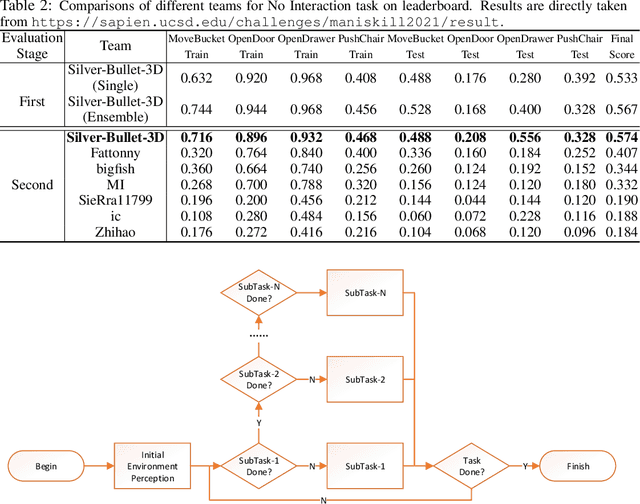Yiheng Zhang
PartSAM: A Scalable Promptable Part Segmentation Model Trained on Native 3D Data
Sep 26, 2025Abstract:Segmenting 3D objects into parts is a long-standing challenge in computer vision. To overcome taxonomy constraints and generalize to unseen 3D objects, recent works turn to open-world part segmentation. These approaches typically transfer supervision from 2D foundation models, such as SAM, by lifting multi-view masks into 3D. However, this indirect paradigm fails to capture intrinsic geometry, leading to surface-only understanding, uncontrolled decomposition, and limited generalization. We present PartSAM, the first promptable part segmentation model trained natively on large-scale 3D data. Following the design philosophy of SAM, PartSAM employs an encoder-decoder architecture in which a triplane-based dual-branch encoder produces spatially structured tokens for scalable part-aware representation learning. To enable large-scale supervision, we further introduce a model-in-the-loop annotation pipeline that curates over five million 3D shape-part pairs from online assets, providing diverse and fine-grained labels. This combination of scalable architecture and diverse 3D data yields emergent open-world capabilities: with a single prompt, PartSAM achieves highly accurate part identification, and in a Segment-Every-Part mode, it automatically decomposes shapes into both surface and internal structures. Extensive experiments show that PartSAM outperforms state-of-the-art methods by large margins across multiple benchmarks, marking a decisive step toward foundation models for 3D part understanding. Our code and model will be released soon.
HiDream-I1: A High-Efficient Image Generative Foundation Model with Sparse Diffusion Transformer
May 28, 2025Abstract:Recent advancements in image generative foundation models have prioritized quality improvements but often at the cost of increased computational complexity and inference latency. To address this critical trade-off, we introduce HiDream-I1, a new open-source image generative foundation model with 17B parameters that achieves state-of-the-art image generation quality within seconds. HiDream-I1 is constructed with a new sparse Diffusion Transformer (DiT) structure. Specifically, it starts with a dual-stream decoupled design of sparse DiT with dynamic Mixture-of-Experts (MoE) architecture, in which two separate encoders are first involved to independently process image and text tokens. Then, a single-stream sparse DiT structure with dynamic MoE architecture is adopted to trigger multi-model interaction for image generation in a cost-efficient manner. To support flexiable accessibility with varied model capabilities, we provide HiDream-I1 in three variants: HiDream-I1-Full, HiDream-I1-Dev, and HiDream-I1-Fast. Furthermore, we go beyond the typical text-to-image generation and remould HiDream-I1 with additional image conditions to perform precise, instruction-based editing on given images, yielding a new instruction-based image editing model namely HiDream-E1. Ultimately, by integrating text-to-image generation and instruction-based image editing, HiDream-I1 evolves to form a comprehensive image agent (HiDream-A1) capable of fully interactive image creation and refinement. To accelerate multi-modal AIGC research, we have open-sourced all the codes and model weights of HiDream-I1-Full, HiDream-I1-Dev, HiDream-I1-Fast, HiDream-E1 through our project websites: https://github.com/HiDream-ai/HiDream-I1 and https://github.com/HiDream-ai/HiDream-E1. All features can be directly experienced via https://vivago.ai/studio.
Visual Anomaly Detection under Complex View-Illumination Interplay: A Large-Scale Benchmark
May 16, 2025Abstract:The practical deployment of Visual Anomaly Detection (VAD) systems is hindered by their sensitivity to real-world imaging variations, particularly the complex interplay between viewpoint and illumination which drastically alters defect visibility. Current benchmarks largely overlook this critical challenge. We introduce Multi-View Multi-Illumination Anomaly Detection (M2AD), a new large-scale benchmark comprising 119,880 high-resolution images designed explicitly to probe VAD robustness under such interacting conditions. By systematically capturing 999 specimens across 10 categories using 12 synchronized views and 10 illumination settings (120 configurations total), M2AD enables rigorous evaluation. We establish two evaluation protocols: M2AD-Synergy tests the ability to fuse information across diverse configurations, and M2AD-Invariant measures single-image robustness against realistic view-illumination effects. Our extensive benchmarking shows that state-of-the-art VAD methods struggle significantly on M2AD, demonstrating the profound challenge posed by view-illumination interplay. This benchmark serves as an essential tool for developing and validating VAD methods capable of overcoming real-world complexities. Our full dataset and test suite will be released at https://hustcyq.github.io/M2AD to facilitate the field.
FreeEnhance: Tuning-Free Image Enhancement via Content-Consistent Noising-and-Denoising Process
Sep 11, 2024



Abstract:The emergence of text-to-image generation models has led to the recognition that image enhancement, performed as post-processing, would significantly improve the visual quality of the generated images. Exploring diffusion models to enhance the generated images nevertheless is not trivial and necessitates to delicately enrich plentiful details while preserving the visual appearance of key content in the original image. In this paper, we propose a novel framework, namely FreeEnhance, for content-consistent image enhancement using the off-the-shelf image diffusion models. Technically, FreeEnhance is a two-stage process that firstly adds random noise to the input image and then capitalizes on a pre-trained image diffusion model (i.e., Latent Diffusion Models) to denoise and enhance the image details. In the noising stage, FreeEnhance is devised to add lighter noise to the region with higher frequency to preserve the high-frequent patterns (e.g., edge, corner) in the original image. In the denoising stage, we present three target properties as constraints to regularize the predicted noise, enhancing images with high acutance and high visual quality. Extensive experiments conducted on the HPDv2 dataset demonstrate that our FreeEnhance outperforms the state-of-the-art image enhancement models in terms of quantitative metrics and human preference. More remarkably, FreeEnhance also shows higher human preference compared to the commercial image enhancement solution of Magnific AI.
Global-Regularized Neighborhood Regression for Efficient Zero-Shot Texture Anomaly Detection
Jun 11, 2024Abstract:Texture surface anomaly detection finds widespread applications in industrial settings. However, existing methods often necessitate gathering numerous samples for model training. Moreover, they predominantly operate within a close-set detection framework, limiting their ability to identify anomalies beyond the training dataset. To tackle these challenges, this paper introduces a novel zero-shot texture anomaly detection method named Global-Regularized Neighborhood Regression (GRNR). Unlike conventional approaches, GRNR can detect anomalies on arbitrary textured surfaces without any training data or cost. Drawing from human visual cognition, GRNR derives two intrinsic prior supports directly from the test texture image: local neighborhood priors characterized by coherent similarities and global normality priors featuring typical normal patterns. The fundamental principle of GRNR involves utilizing the two extracted intrinsic support priors for self-reconstructive regression of the query sample. This process employs the transformation facilitated by local neighbor support while being regularized by global normality support, aiming to not only achieve visually consistent reconstruction results but also preserve normality properties. We validate the effectiveness of GRNR across various industrial scenarios using eight benchmark datasets, demonstrating its superior detection performance without the need for training data. Remarkably, our method is applicable for open-set texture defect detection and can even surpass existing vanilla approaches that require extensive training.
Attention Fusion Reverse Distillation for Multi-Lighting Image Anomaly Detection
Jun 07, 2024Abstract:This study targets Multi-Lighting Image Anomaly Detection (MLIAD), where multiple lighting conditions are utilized to enhance imaging quality and anomaly detection performance. While numerous image anomaly detection methods have been proposed, they lack the capacity to handle multiple inputs for a single sample, like multi-lighting images in MLIAD. Hence, this study proposes Attention Fusion Reverse Distillation (AFRD) to handle multiple inputs in MLIAD. For this purpose, AFRD utilizes a pre-trained teacher network to extract features from multiple inputs. Then these features are aggregated into fused features through an attention module. Subsequently, a corresponding student net-work is utilized to regress the attention fused features. The regression errors are denoted as anomaly scores during inference. Experiments on Eyecandies demonstrates that AFRD achieves superior MLIAD performance than other MLIAD alternatives, also highlighting the benefit of using multiple lighting conditions for anomaly detection.
LogiCode: an LLM-Driven Framework for Logical Anomaly Detection
Jun 07, 2024Abstract:This paper presents LogiCode, a novel framework that leverages Large Language Models (LLMs) for identifying logical anomalies in industrial settings, moving beyond traditional focus on structural inconsistencies. By harnessing LLMs for logical reasoning, LogiCode autonomously generates Python codes to pinpoint anomalies such as incorrect component quantities or missing elements, marking a significant leap forward in anomaly detection technologies. A custom dataset "LOCO-Annotations" and a benchmark "LogiBench" are introduced to evaluate the LogiCode's performance across various metrics including binary classification accuracy, code generation success rate, and precision in reasoning. Findings demonstrate LogiCode's enhanced interpretability, significantly improving the accuracy of logical anomaly detection and offering detailed explanations for identified anomalies. This represents a notable shift towards more intelligent, LLM-driven approaches in industrial anomaly detection, promising substantial impacts on industry-specific applications.
Explaining Cross-Domain Recognition with Interpretable Deep Classifier
Nov 15, 2022Abstract:The recent advances in deep learning predominantly construct models in their internal representations, and it is opaque to explain the rationale behind and decisions to human users. Such explainability is especially essential for domain adaptation, whose challenges require developing more adaptive models across different domains. In this paper, we ask the question: how much each sample in source domain contributes to the network's prediction on the samples from target domain. To address this, we devise a novel Interpretable Deep Classifier (IDC) that learns the nearest source samples of a target sample as evidence upon which the classifier makes the decision. Technically, IDC maintains a differentiable memory bank for each category and the memory slot derives a form of key-value pair. The key records the features of discriminative source samples and the value stores the corresponding properties, e.g., representative scores of the features for describing the category. IDC computes the loss between the output of IDC and the labels of source samples to back-propagate to adjust the representative scores and update the memory banks. Extensive experiments on Office-Home and VisDA-2017 datasets demonstrate that our IDC leads to a more explainable model with almost no accuracy degradation and effectively calibrates classification for optimum reject options. More remarkably, when taking IDC as a prior interpreter, capitalizing on 0.1% source training data selected by IDC still yields superior results than that uses full training set on VisDA-2017 for unsupervised domain adaptation.
Lightweight and Progressively-Scalable Networks for Semantic Segmentation
Jul 27, 2022



Abstract:Multi-scale learning frameworks have been regarded as a capable class of models to boost semantic segmentation. The problem nevertheless is not trivial especially for the real-world deployments, which often demand high efficiency in inference latency. In this paper, we thoroughly analyze the design of convolutional blocks (the type of convolutions and the number of channels in convolutions), and the ways of interactions across multiple scales, all from lightweight standpoint for semantic segmentation. With such in-depth comparisons, we conclude three principles, and accordingly devise Lightweight and Progressively-Scalable Networks (LPS-Net) that novelly expands the network complexity in a greedy manner. Technically, LPS-Net first capitalizes on the principles to build a tiny network. Then, LPS-Net progressively scales the tiny network to larger ones by expanding a single dimension (the number of convolutional blocks, the number of channels, or the input resolution) at one time to meet the best speed/accuracy tradeoff. Extensive experiments conducted on three datasets consistently demonstrate the superiority of LPS-Net over several efficient semantic segmentation methods. More remarkably, our LPS-Net achieves 73.4% mIoU on Cityscapes test set, with the speed of 413.5FPS on an NVIDIA GTX 1080Ti, leading to a performance improvement by 1.5% and a 65% speed-up against the state-of-the-art STDC. Code is available at \url{https://github.com/YihengZhang-CV/LPS-Net}.
Silver-Bullet-3D at ManiSkill 2021: Learning-from-Demonstrations and Heuristic Rule-based Methods for Object Manipulation
Jun 13, 2022



Abstract:This paper presents an overview and comparative analysis of our systems designed for the following two tracks in SAPIEN ManiSkill Challenge 2021: No Interaction Track: The No Interaction track targets for learning policies from pre-collected demonstration trajectories. We investigate both imitation learning-based approach, i.e., imitating the observed behavior using classical supervised learning techniques, and offline reinforcement learning-based approaches, for this track. Moreover, the geometry and texture structures of objects and robotic arms are exploited via Transformer-based networks to facilitate imitation learning. No Restriction Track: In this track, we design a Heuristic Rule-based Method (HRM) to trigger high-quality object manipulation by decomposing the task into a series of sub-tasks. For each sub-task, the simple rule-based controlling strategies are adopted to predict actions that can be applied to robotic arms. To ease the implementations of our systems, all the source codes and pre-trained models are available at \url{https://github.com/caiqi/Silver-Bullet-3D/}.
 Add to Chrome
Add to Chrome Add to Firefox
Add to Firefox Add to Edge
Add to Edge